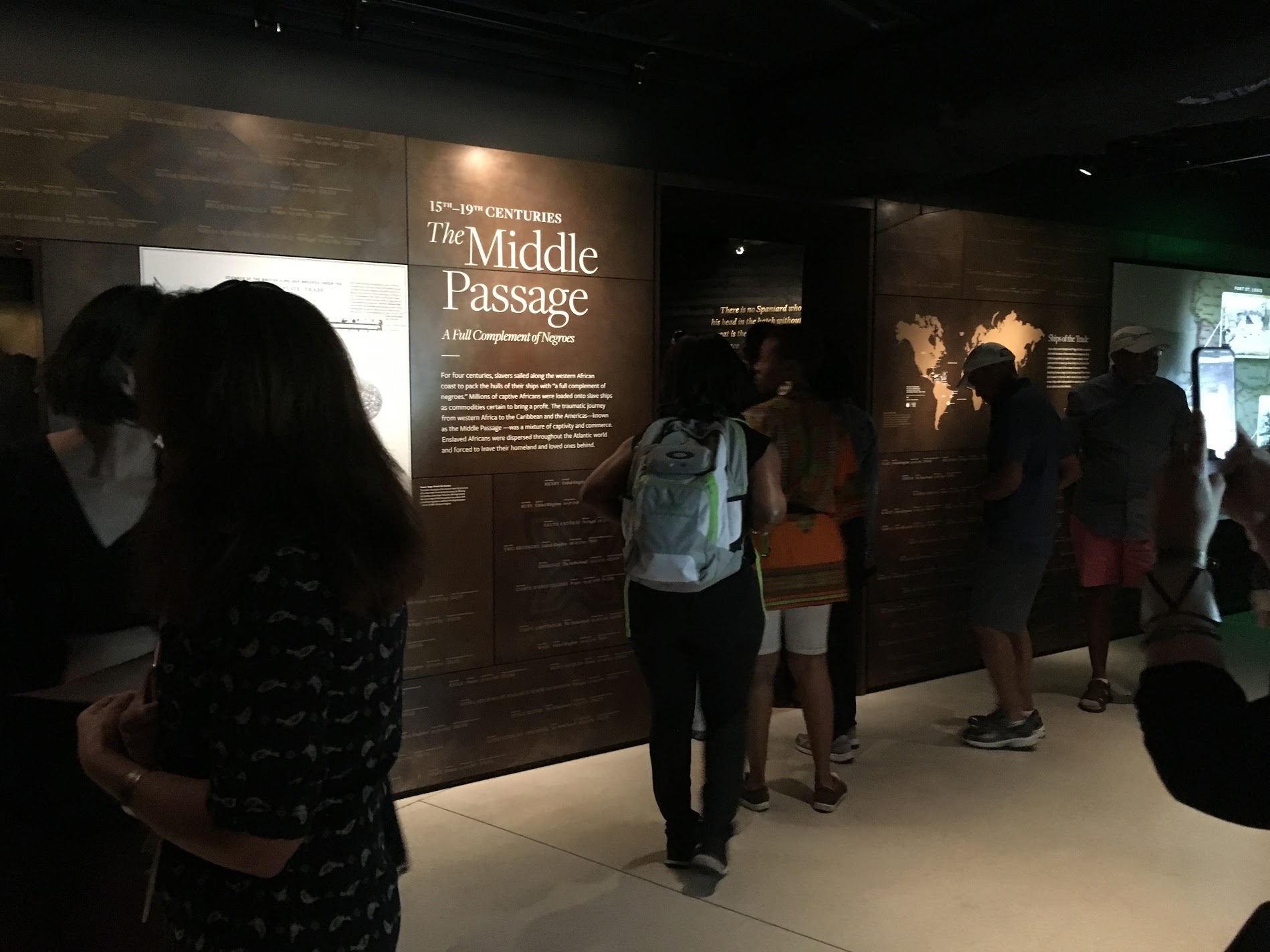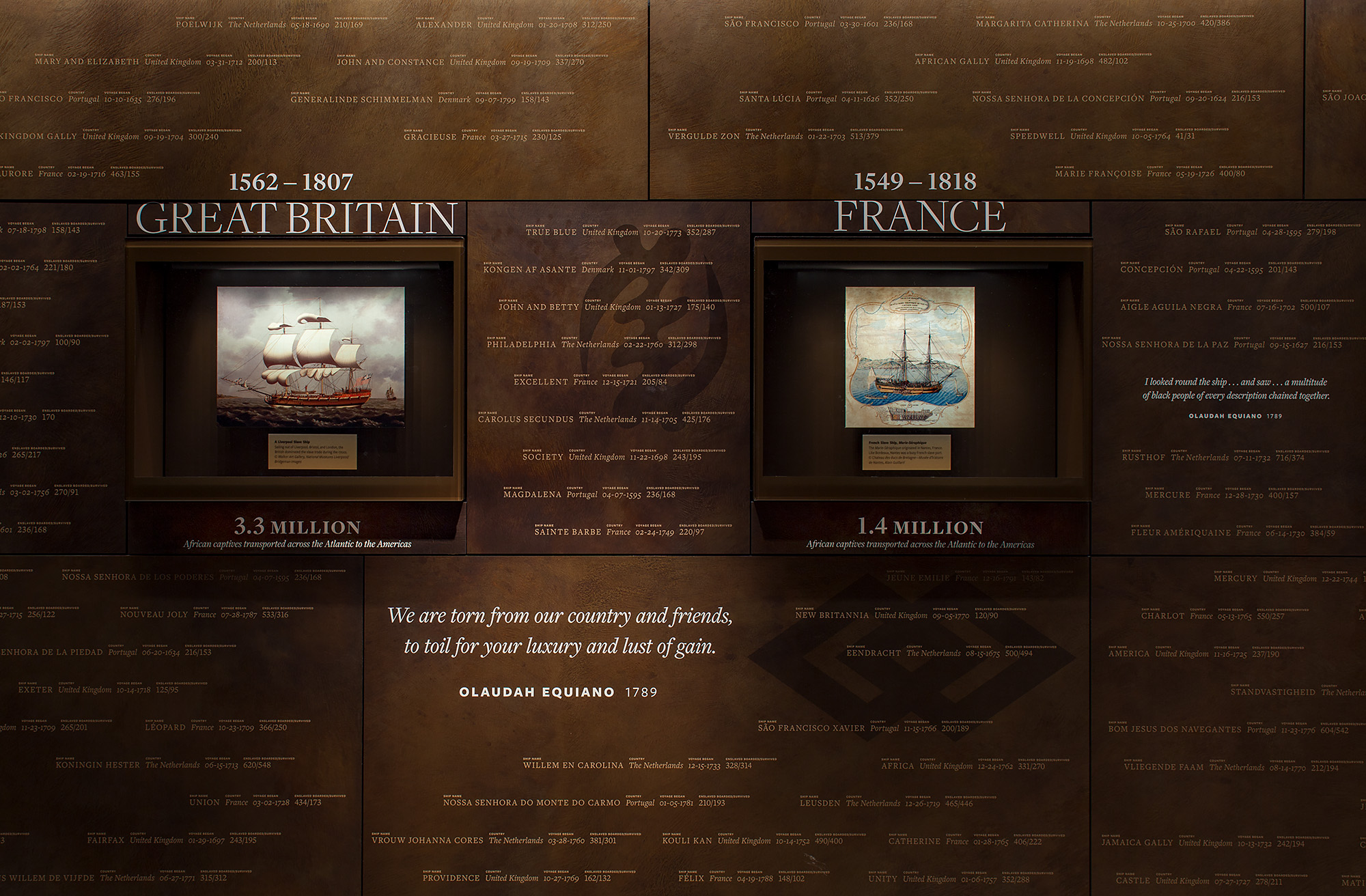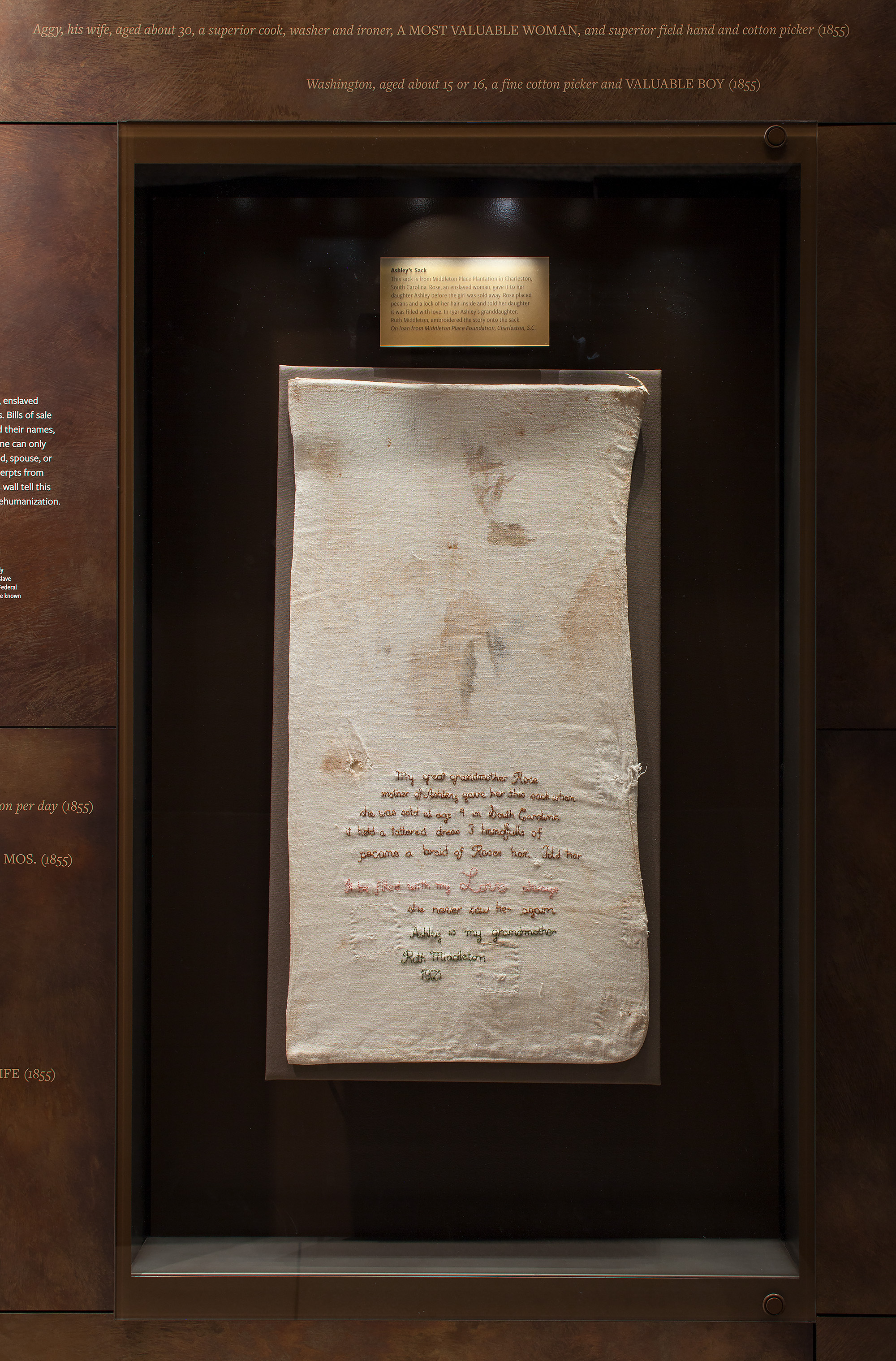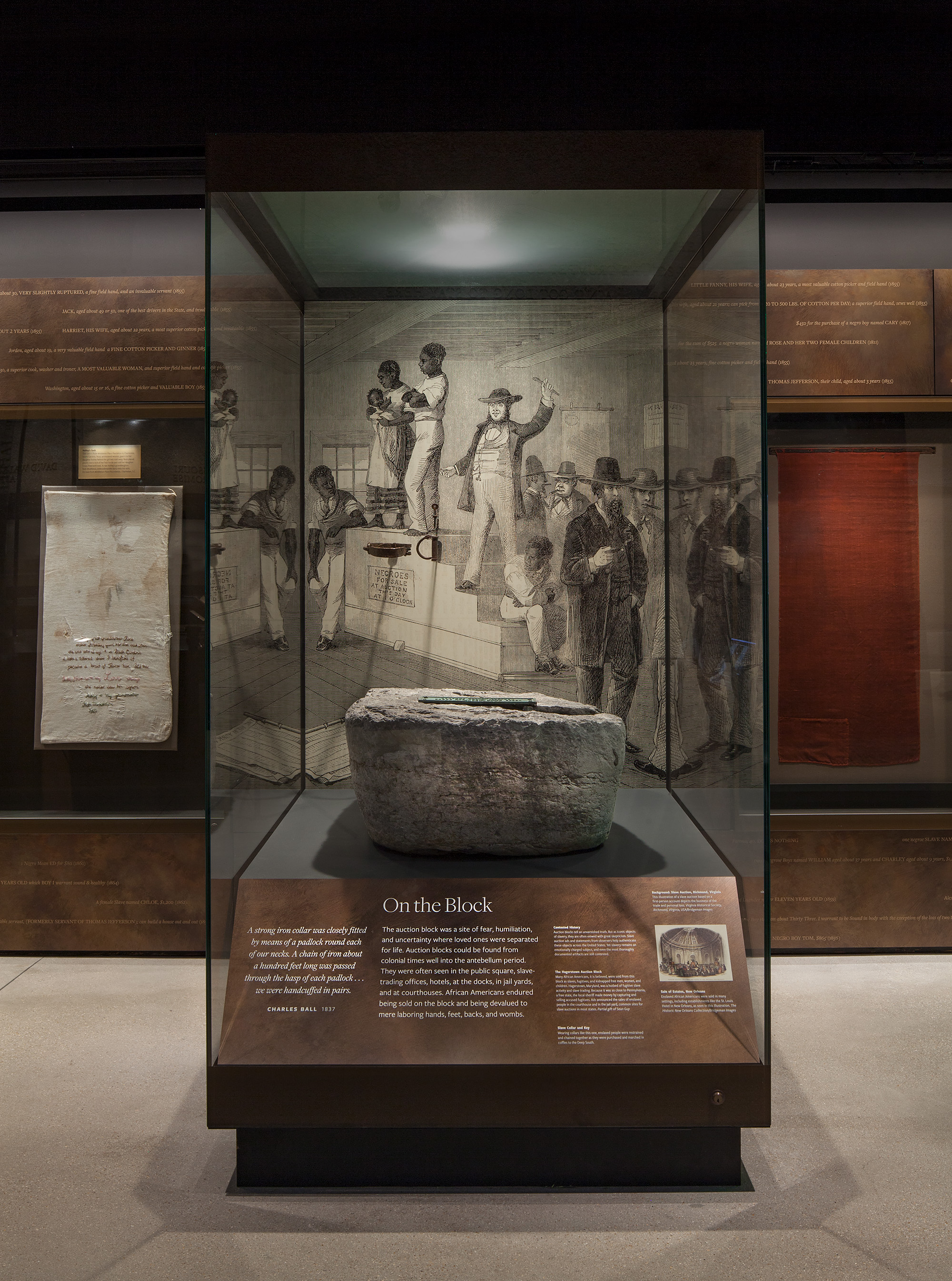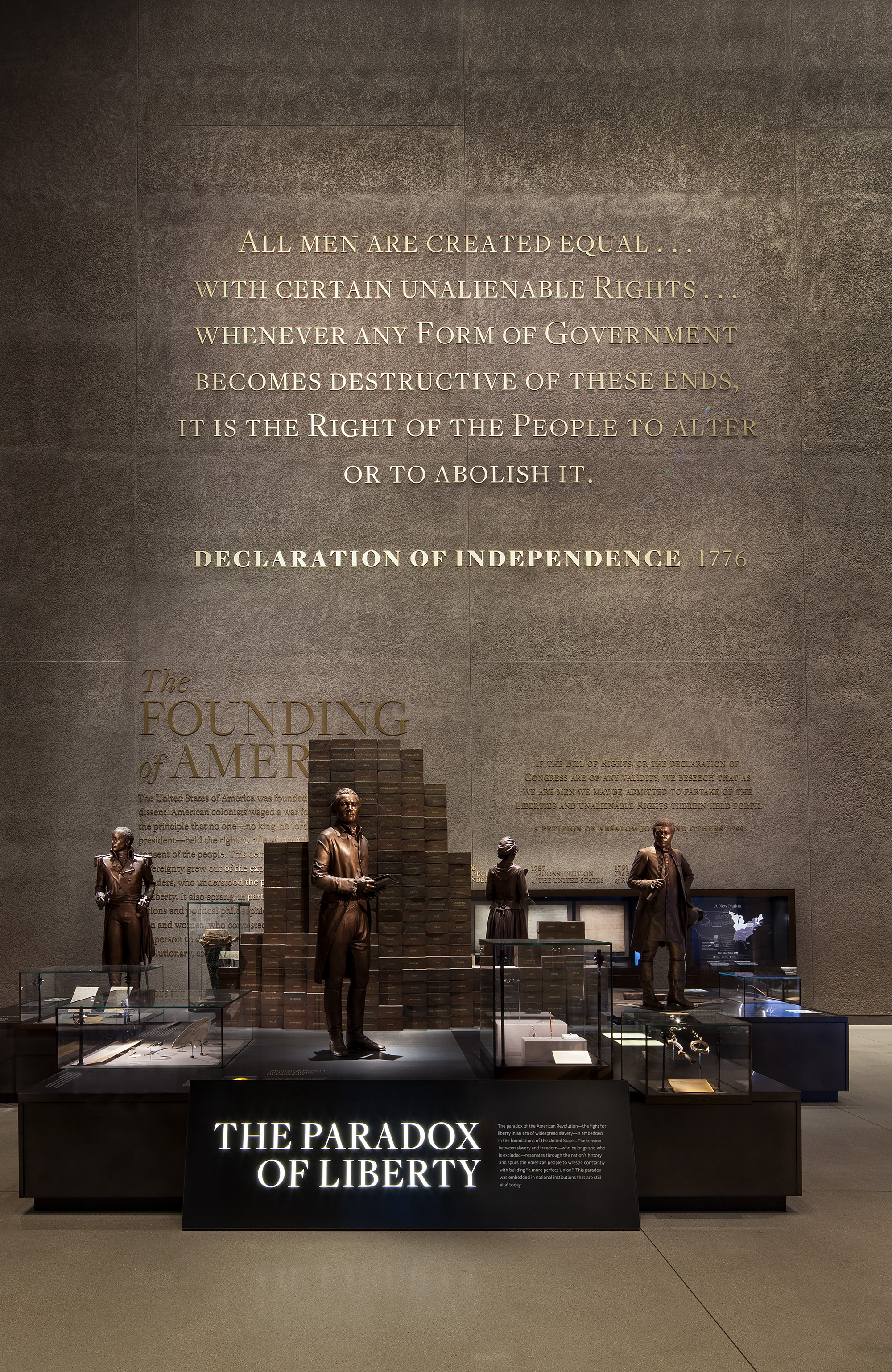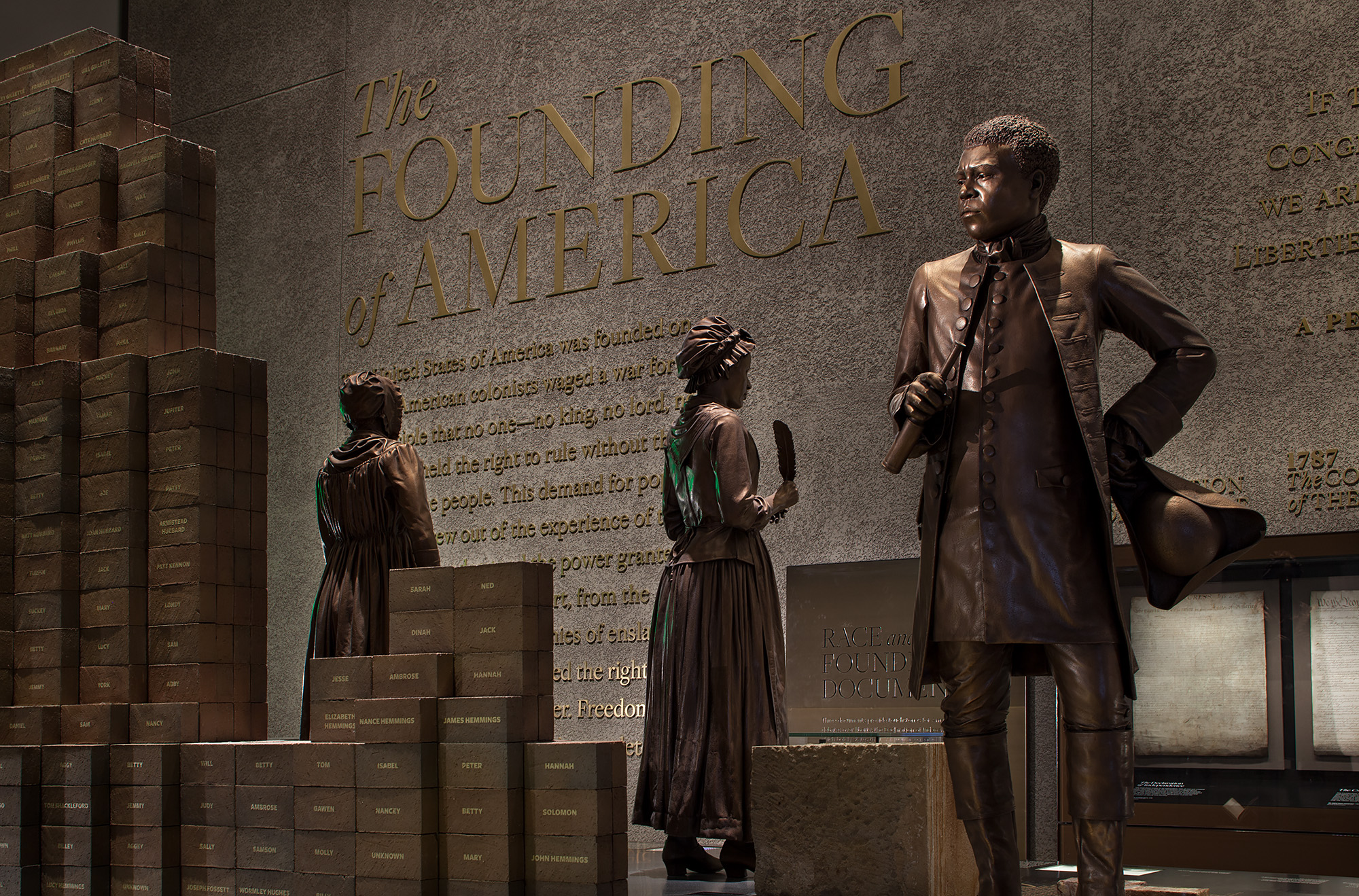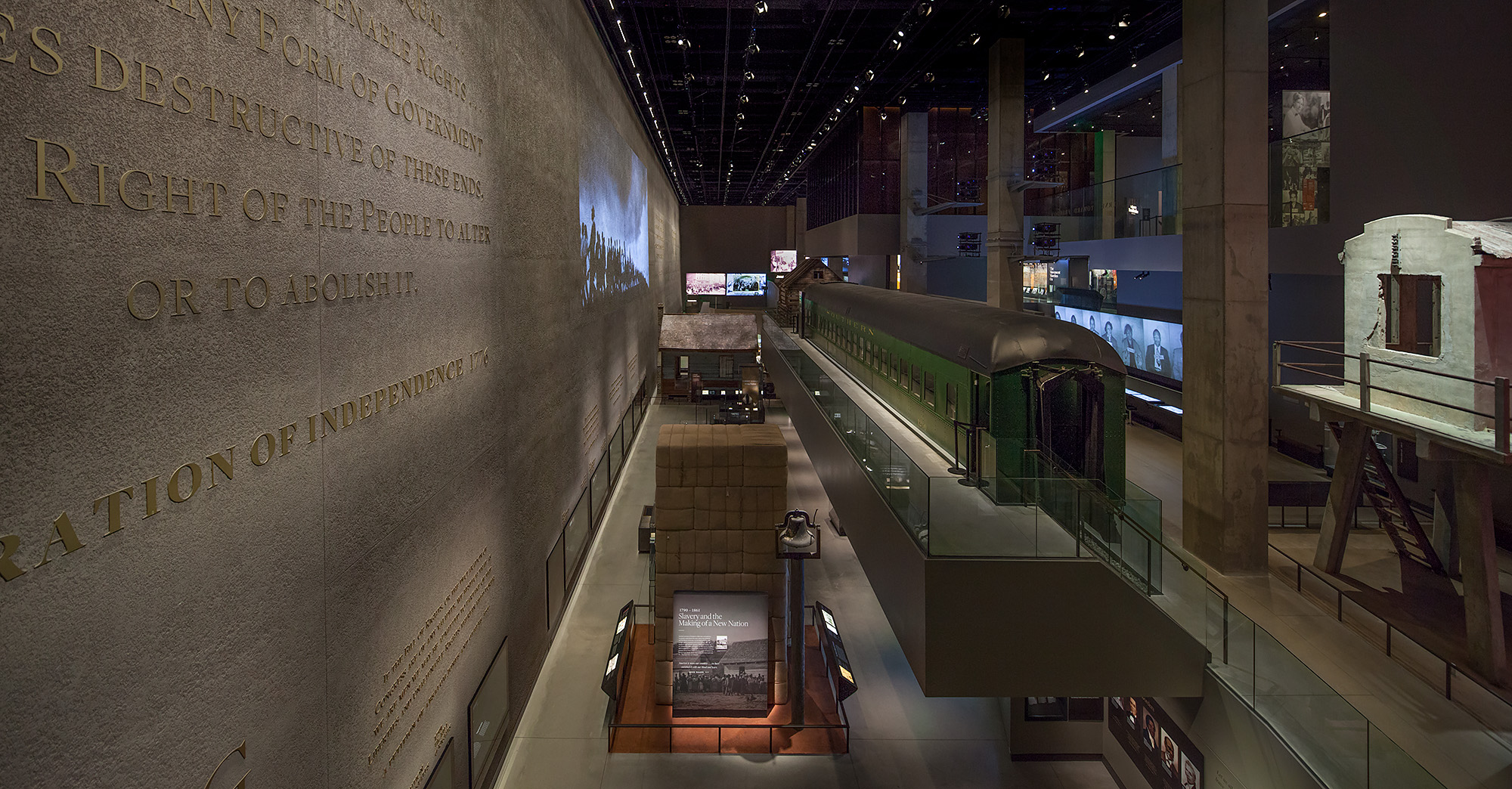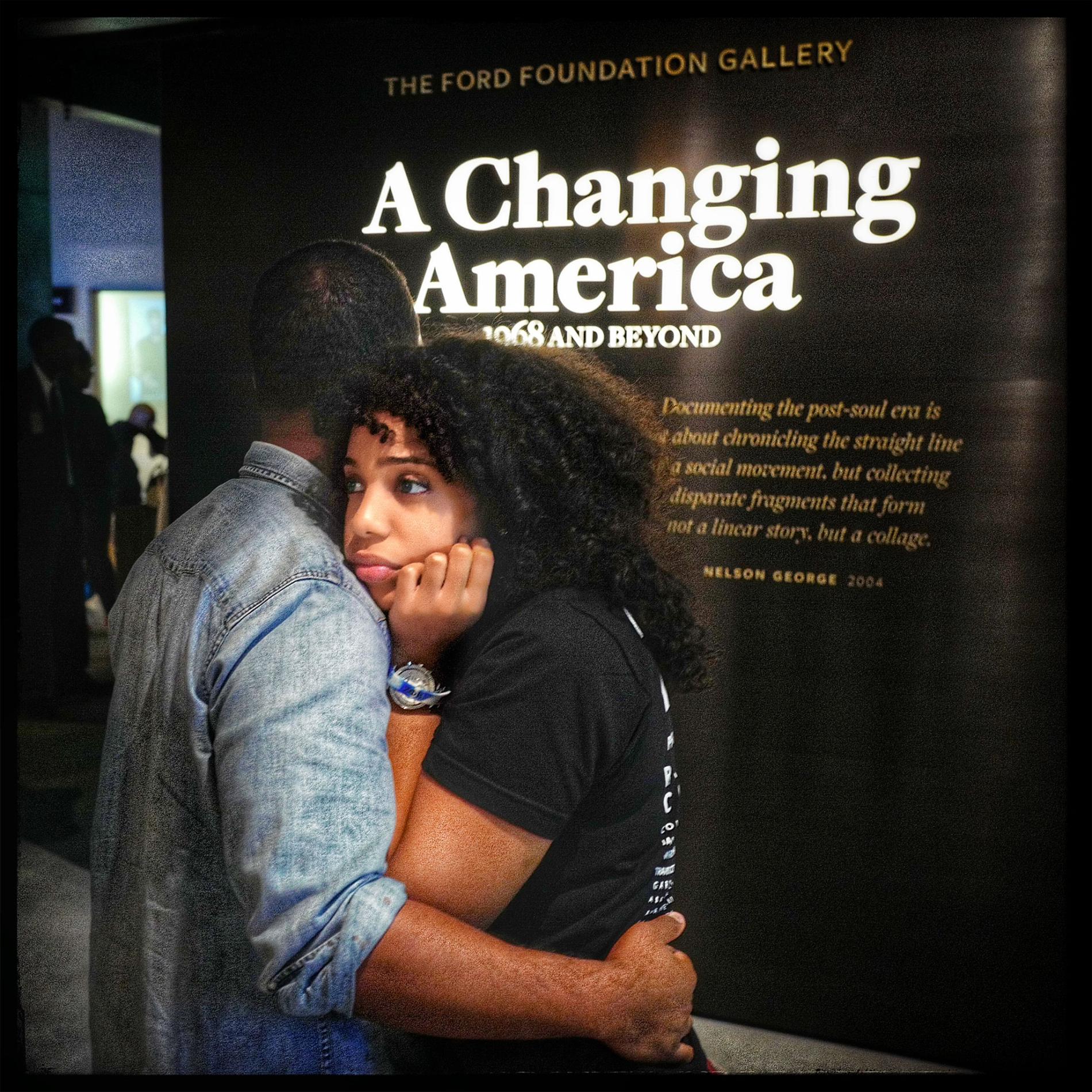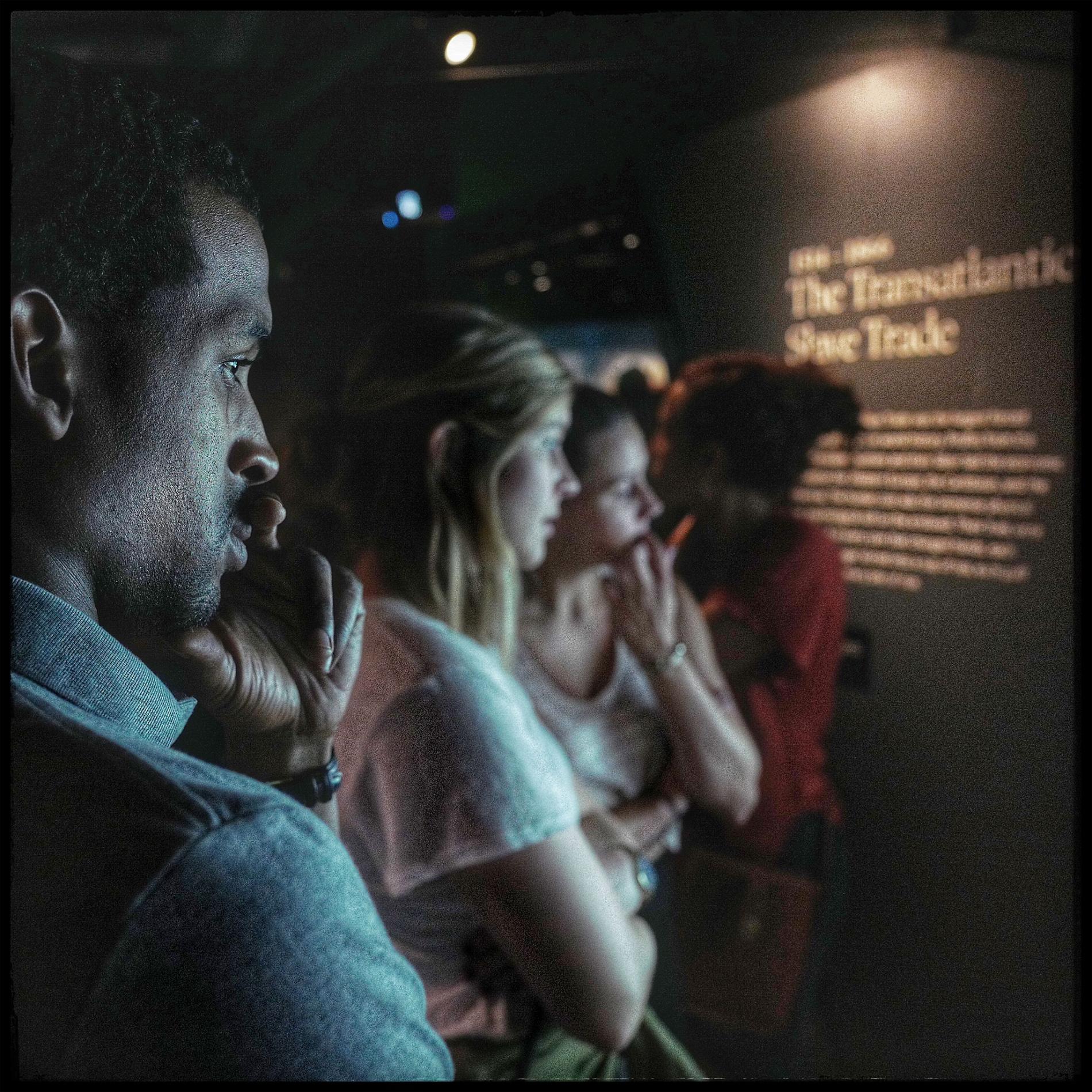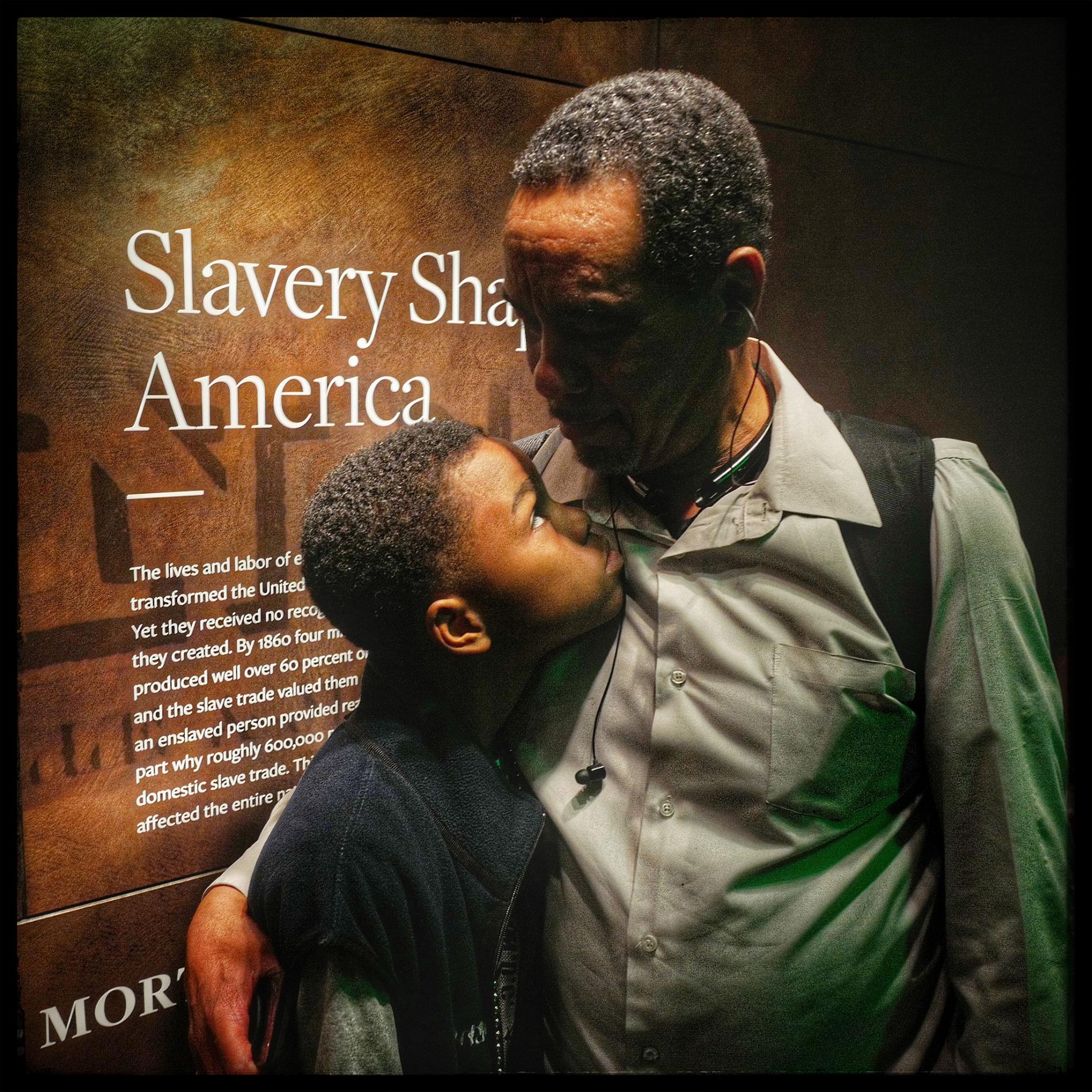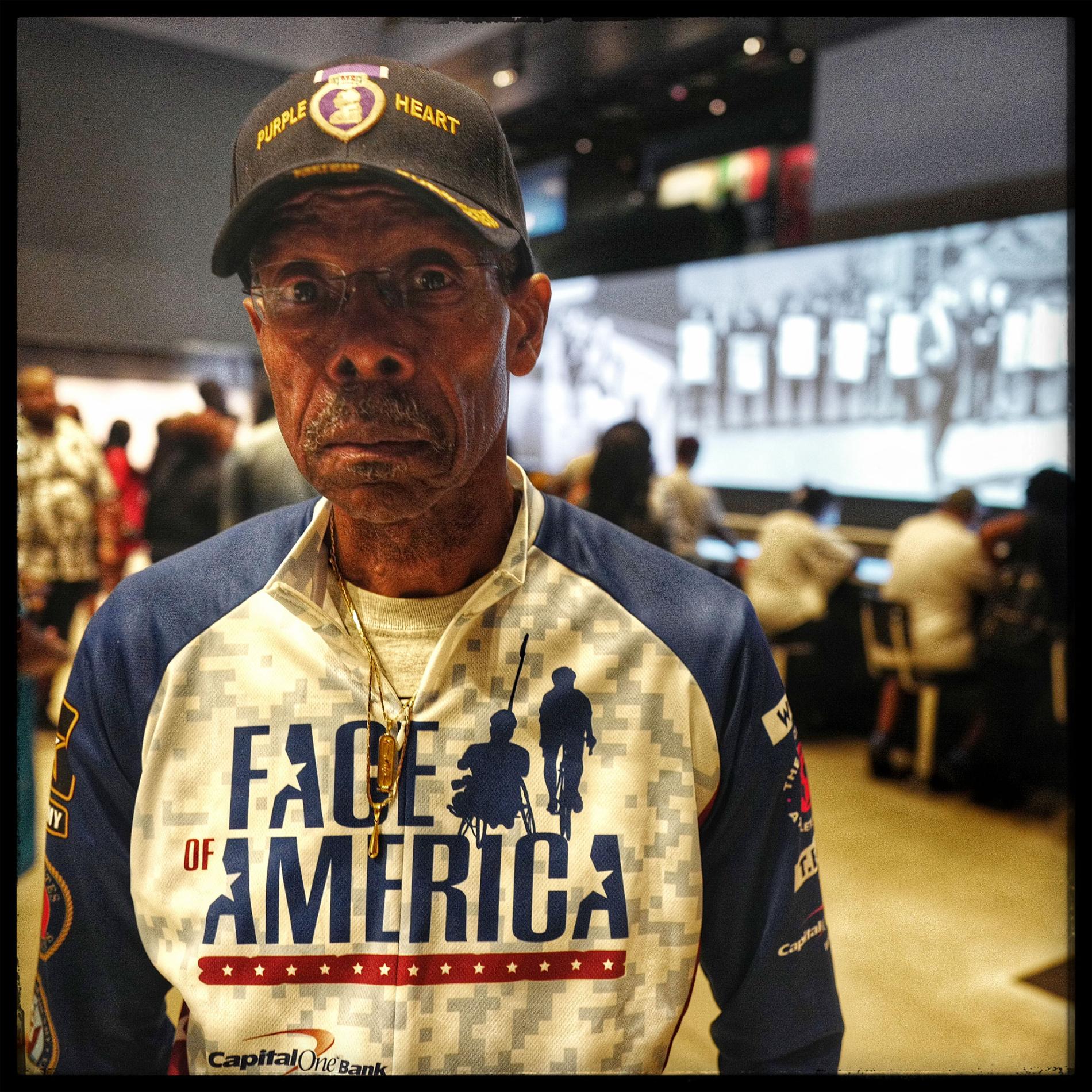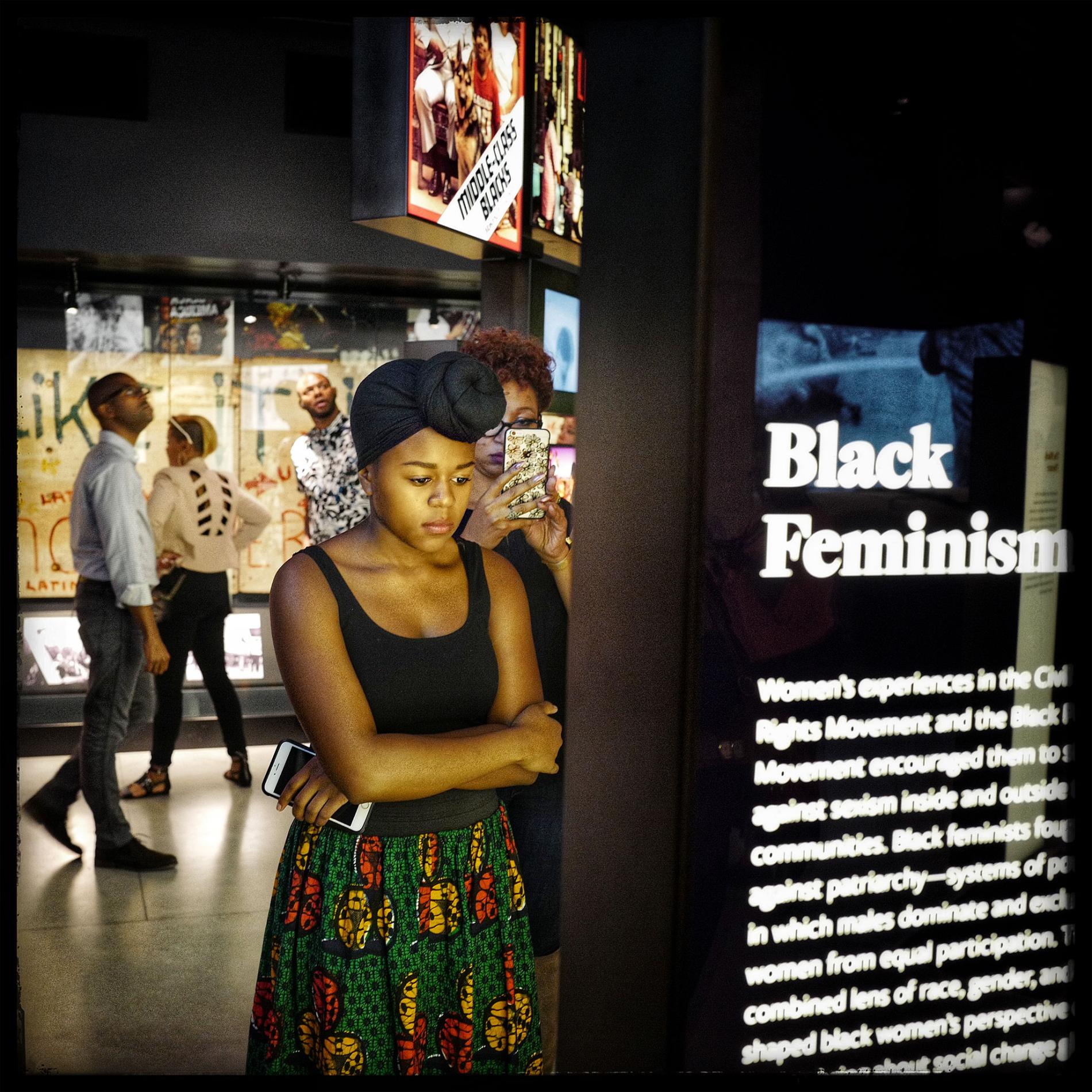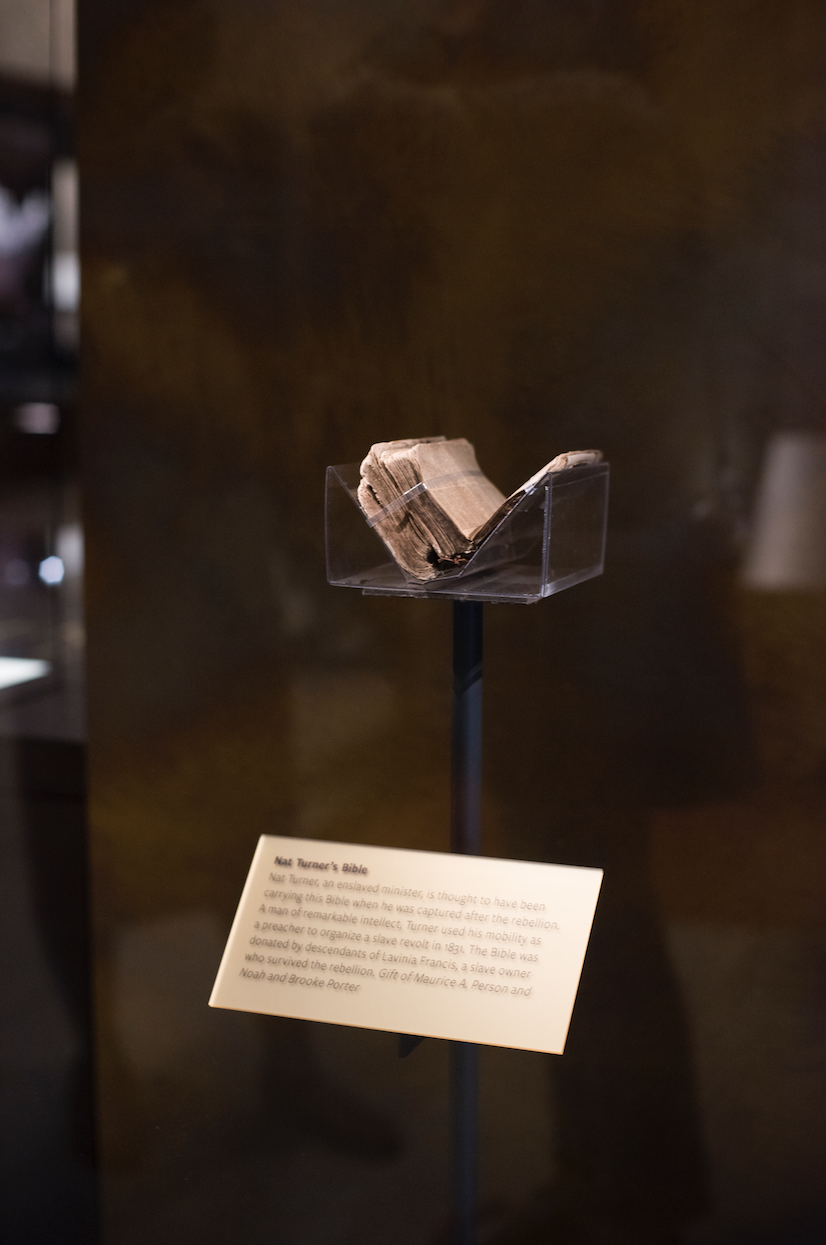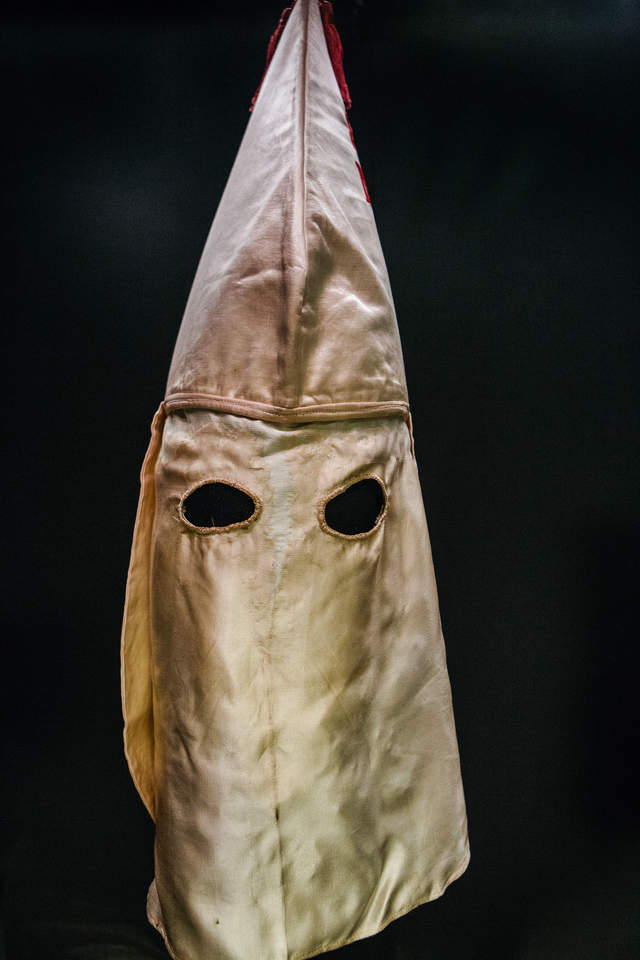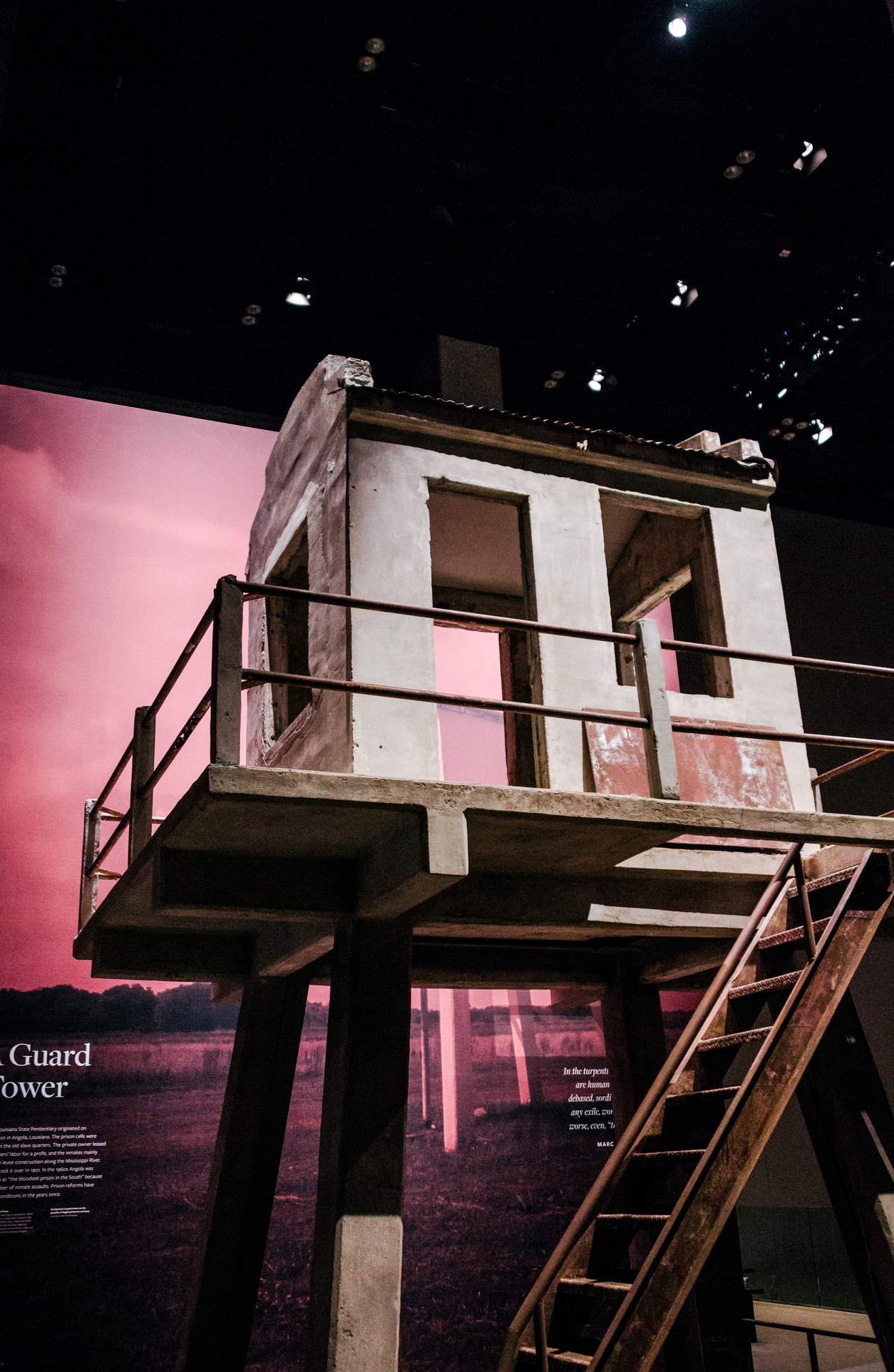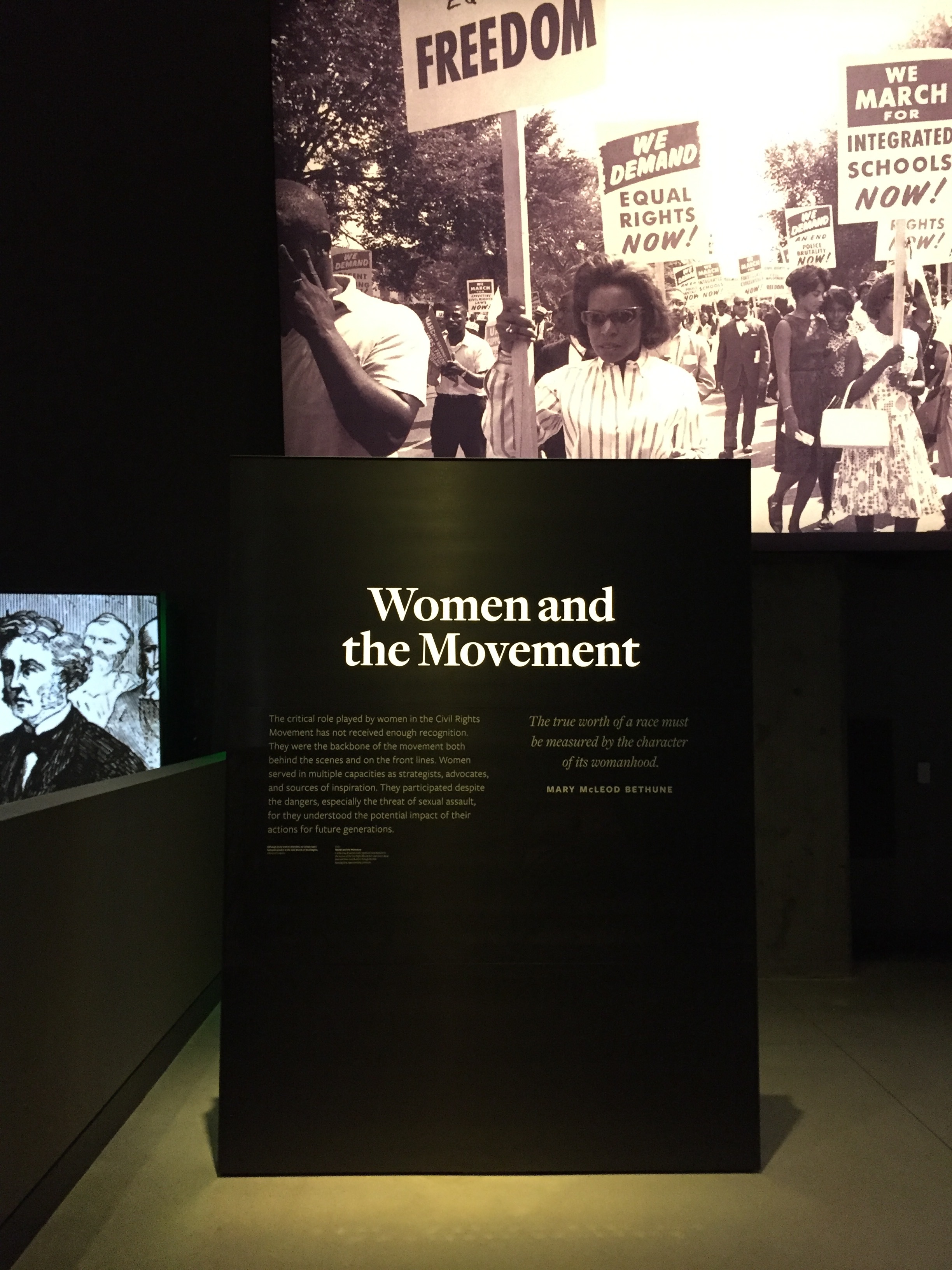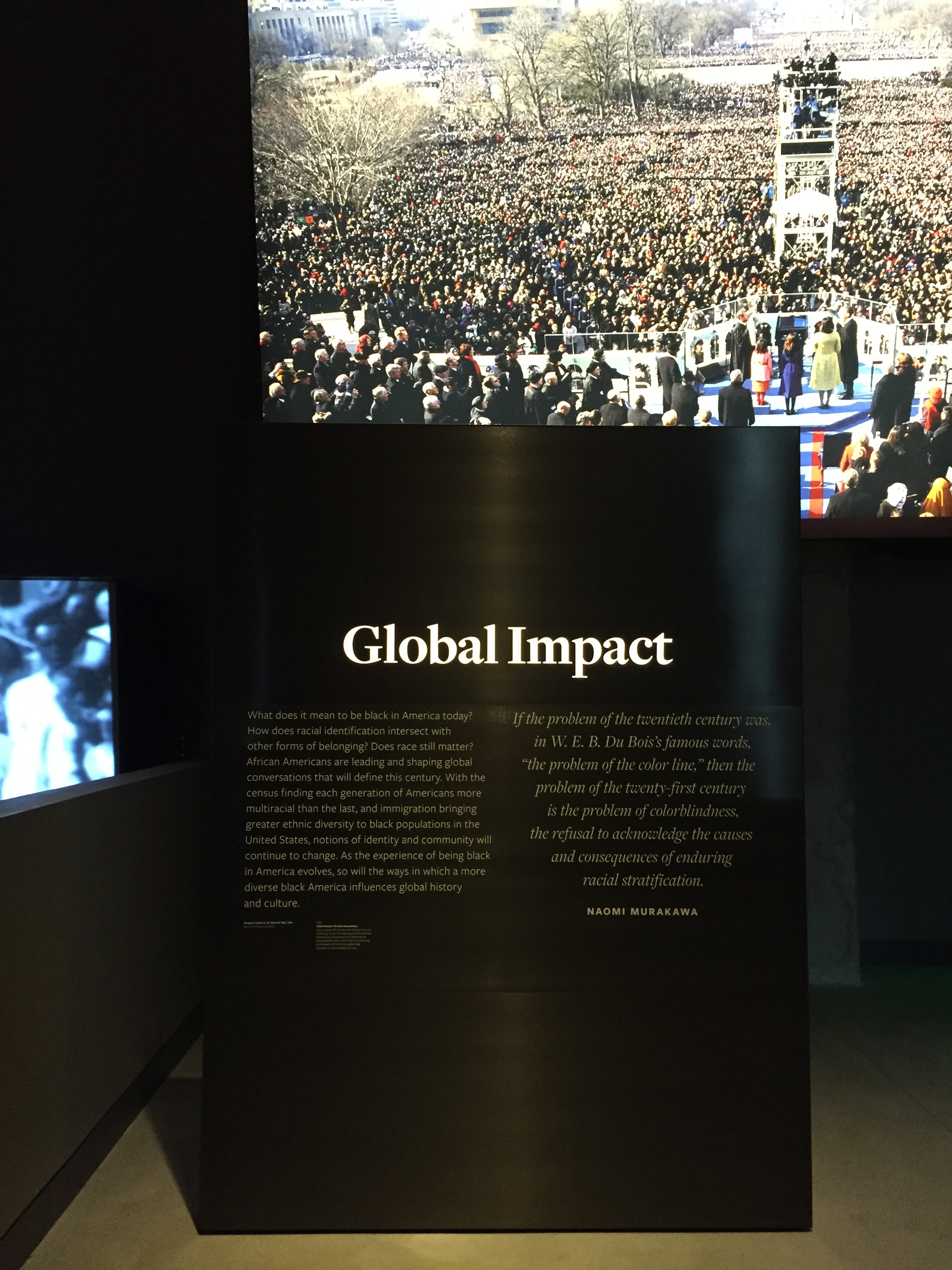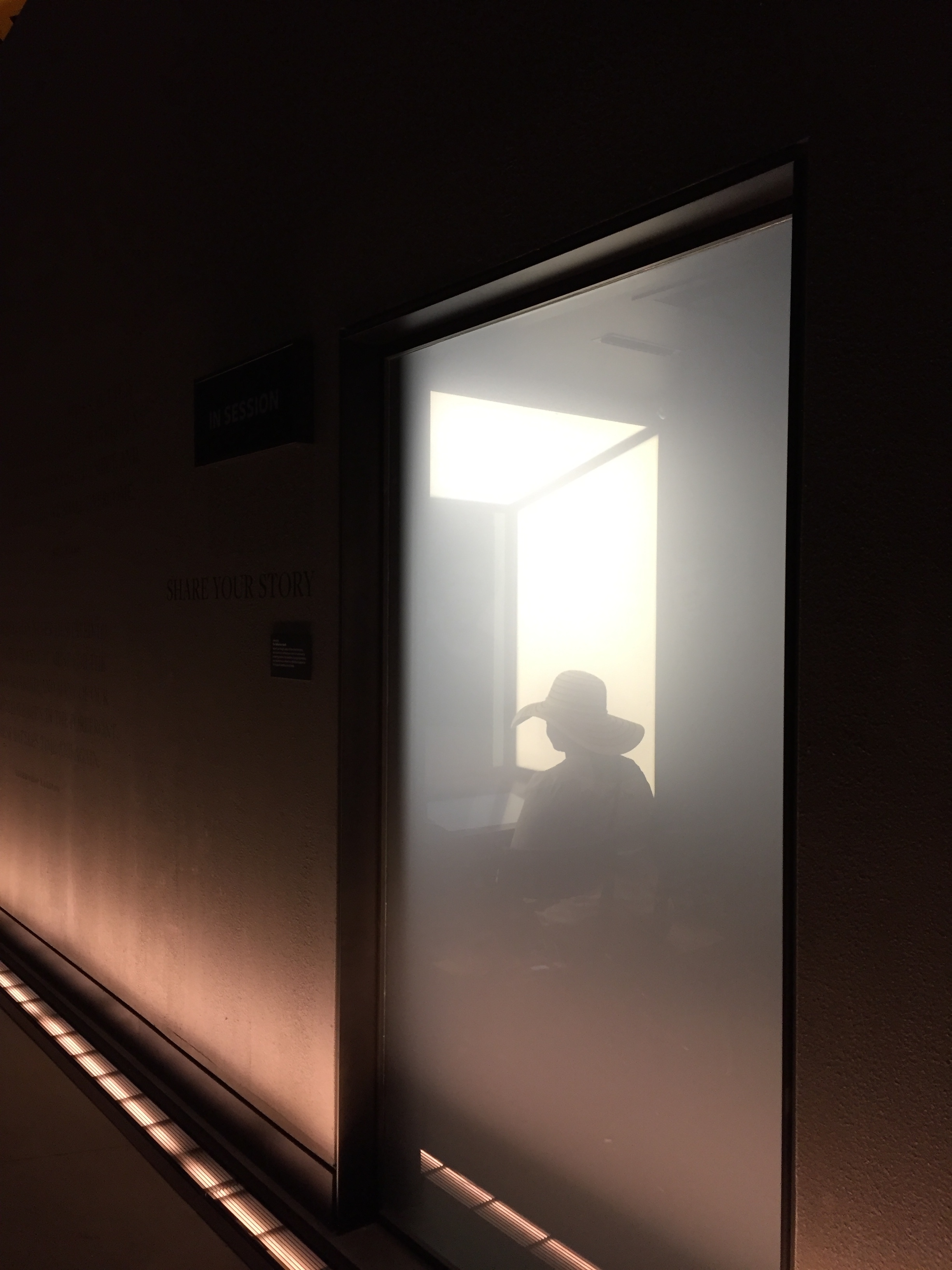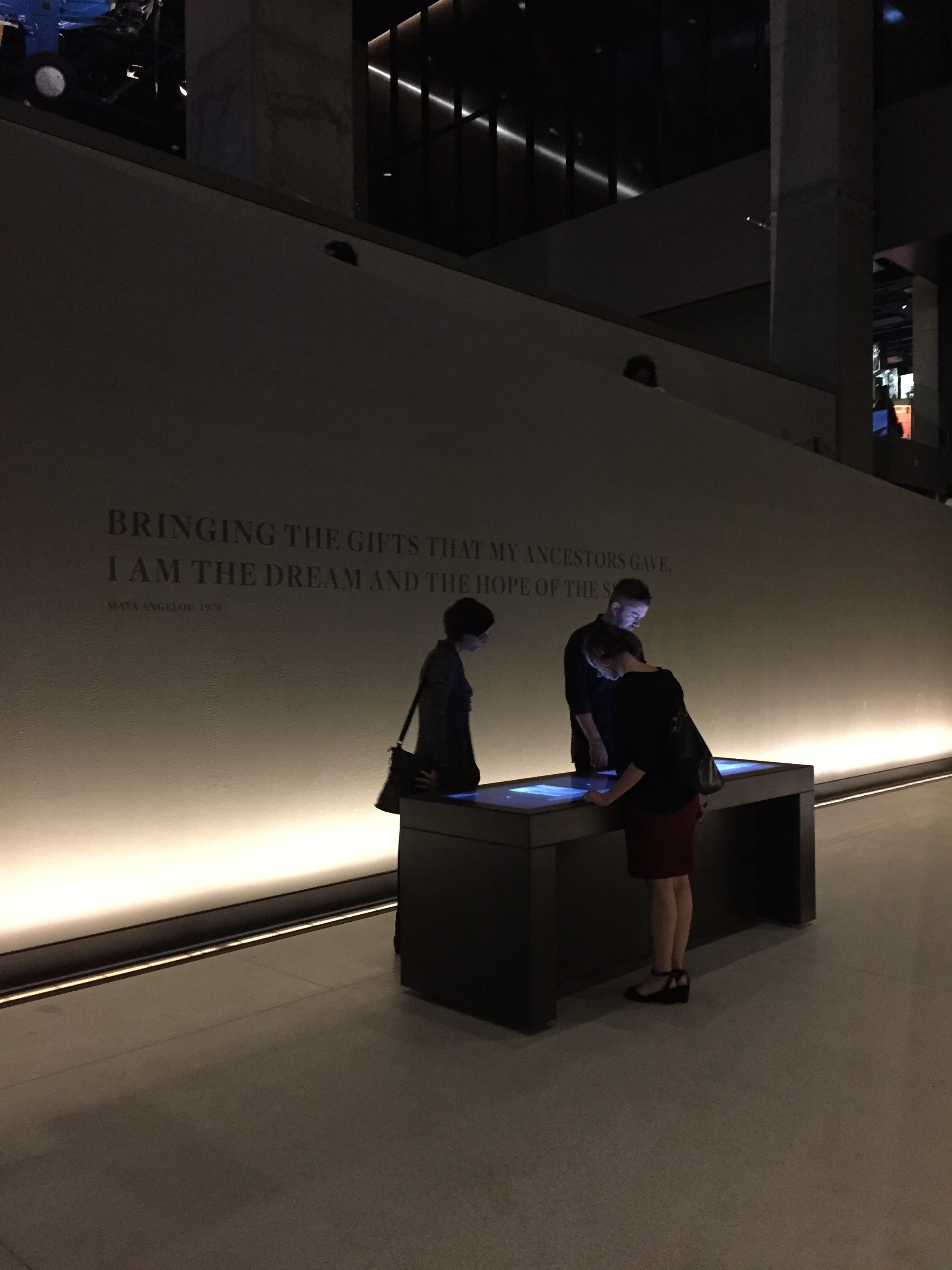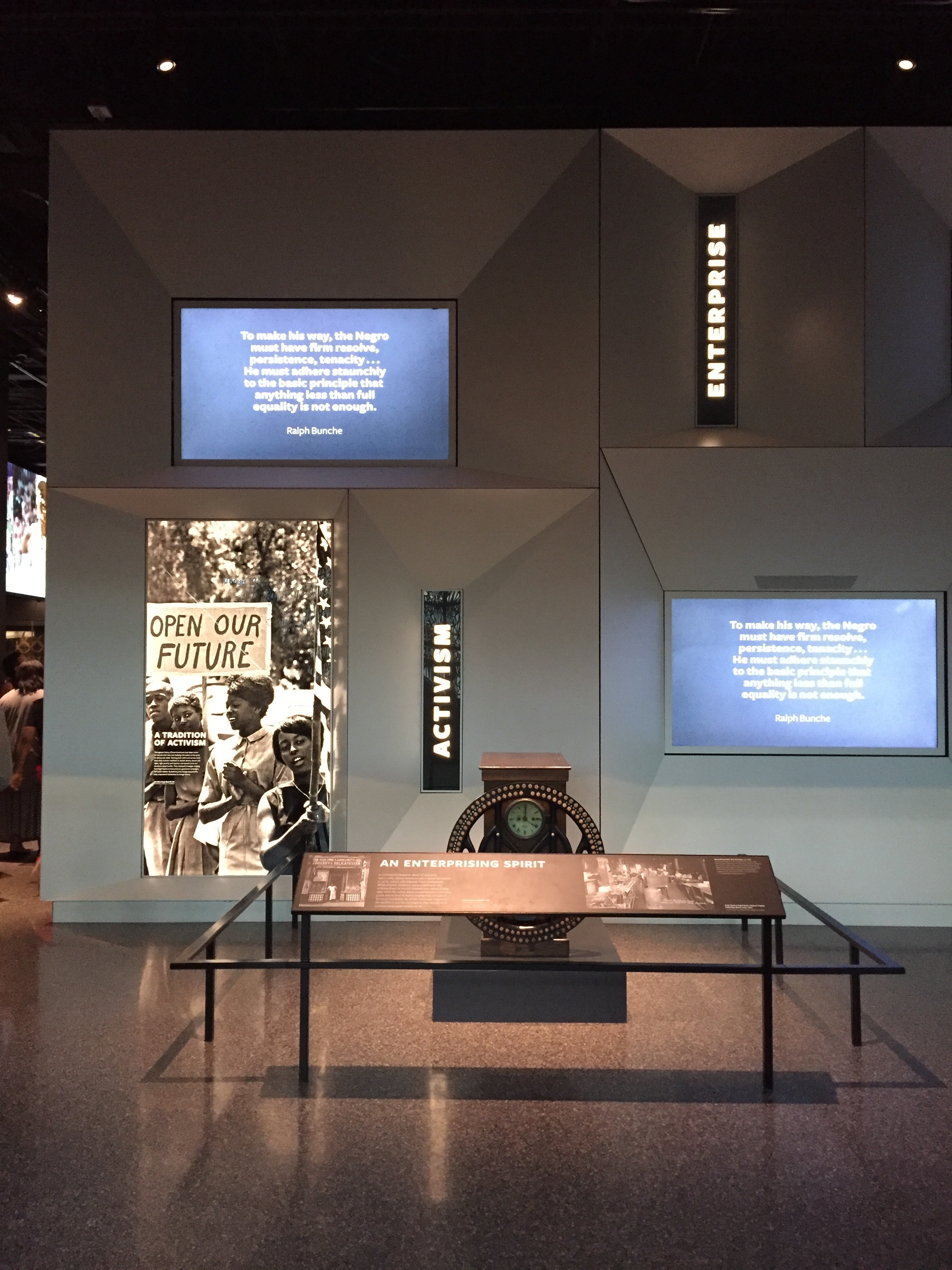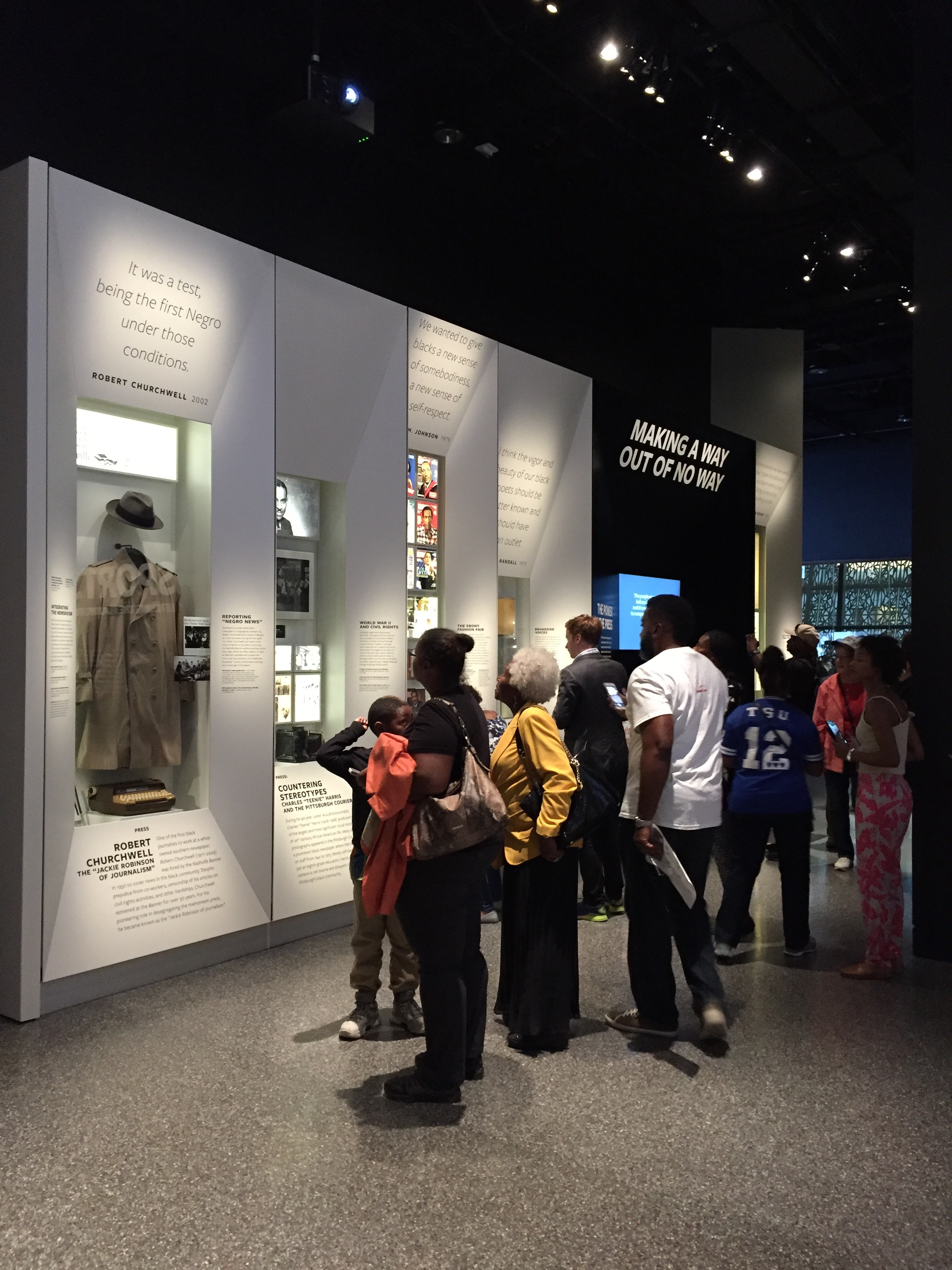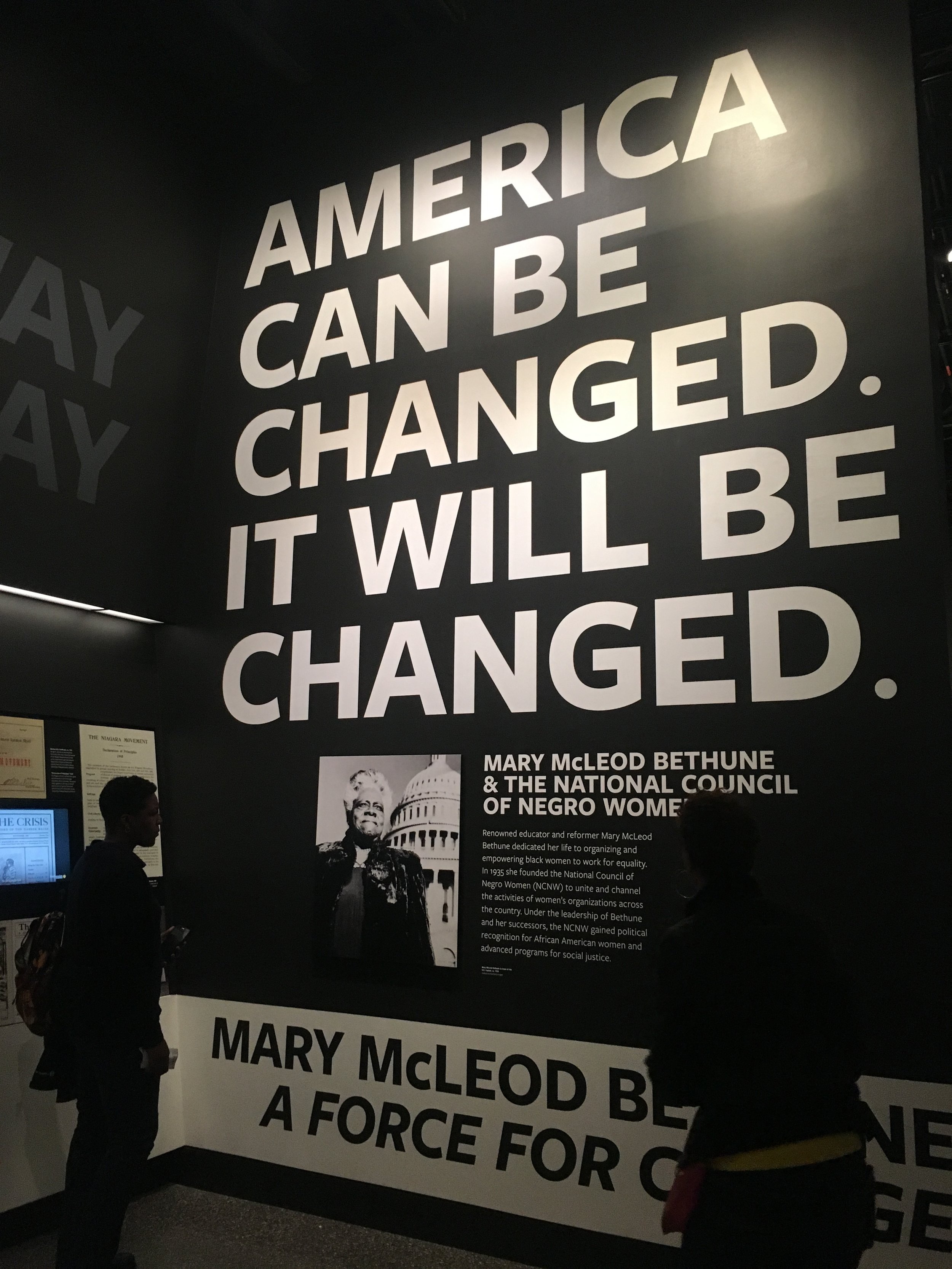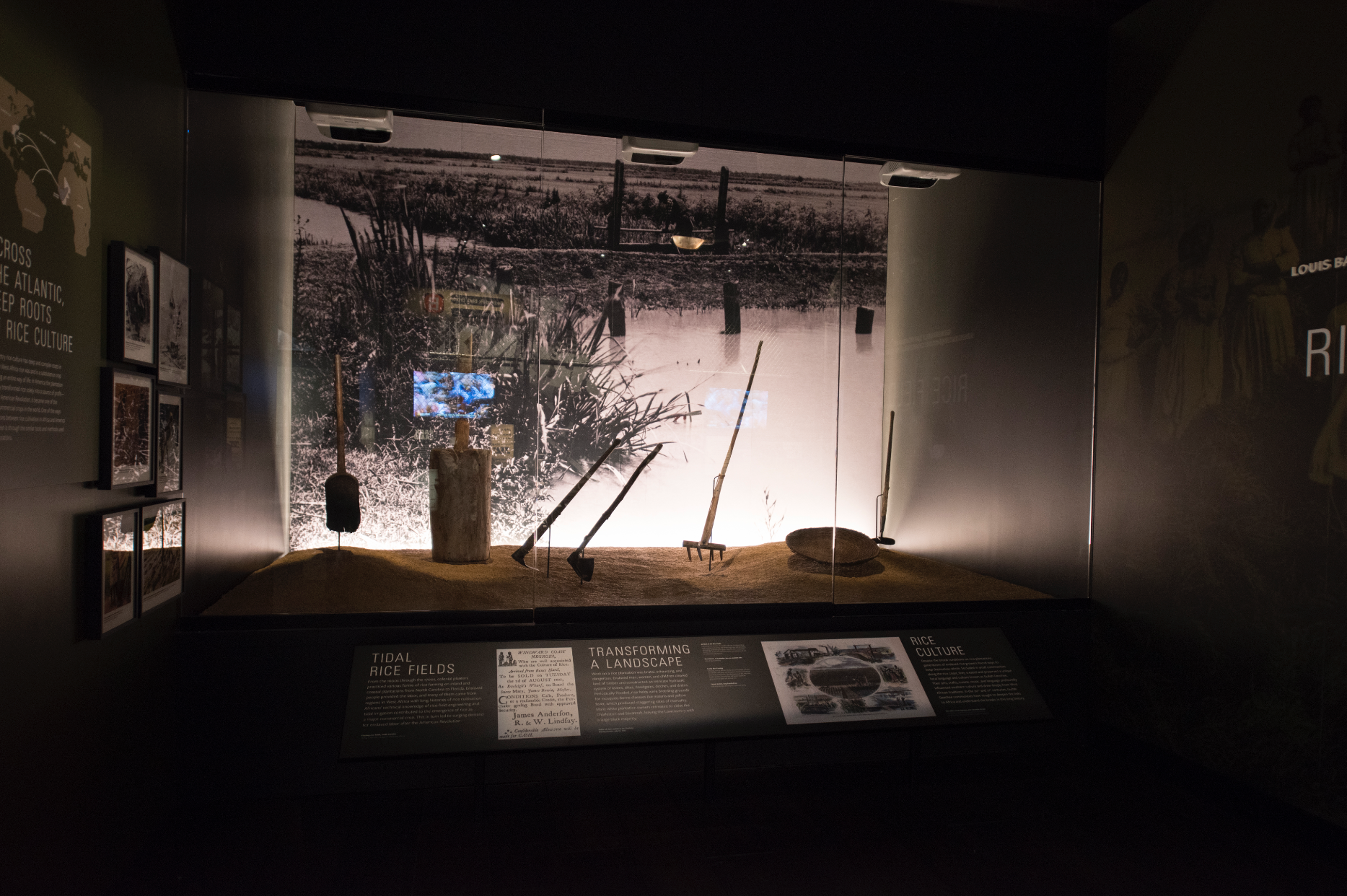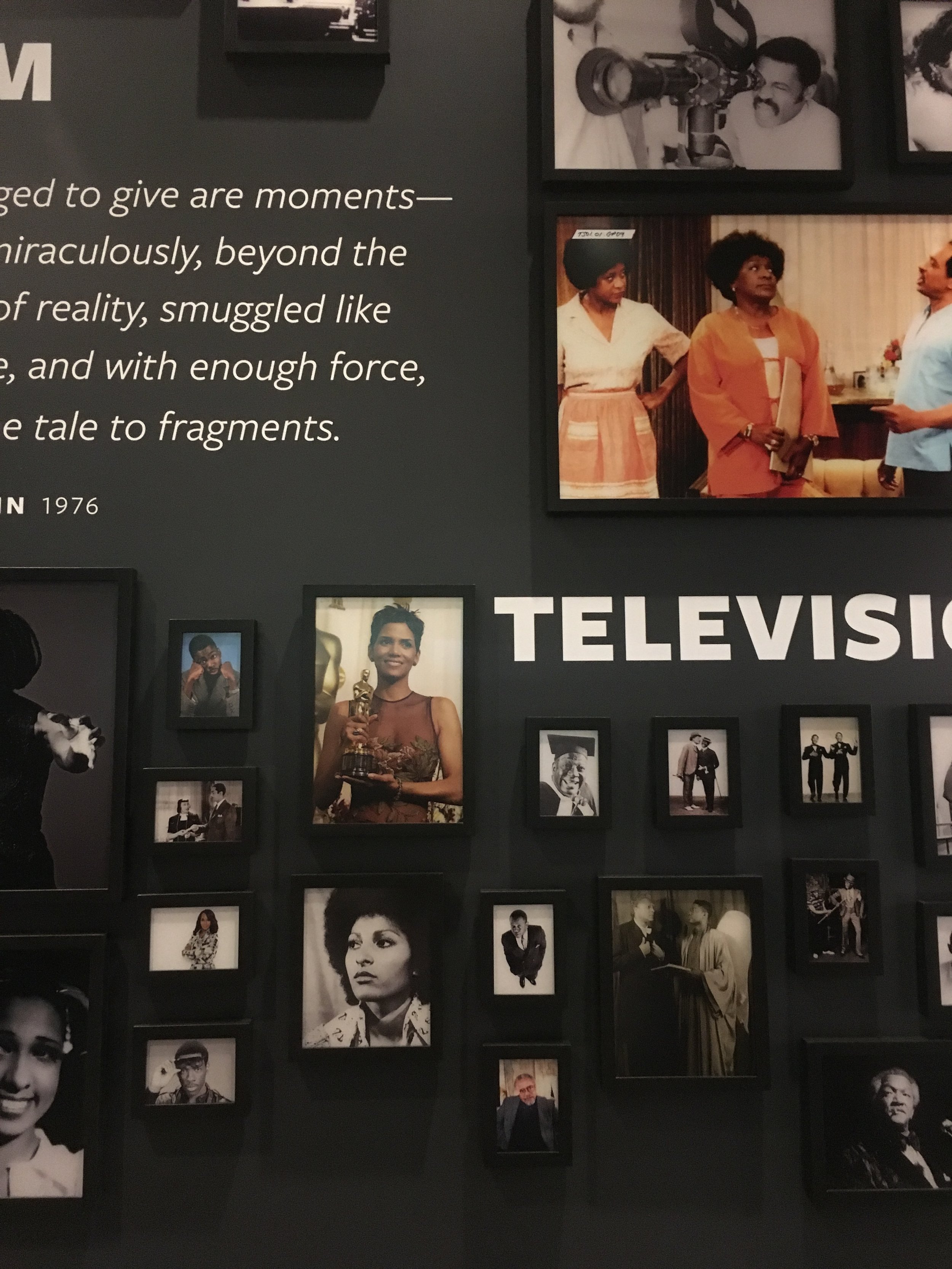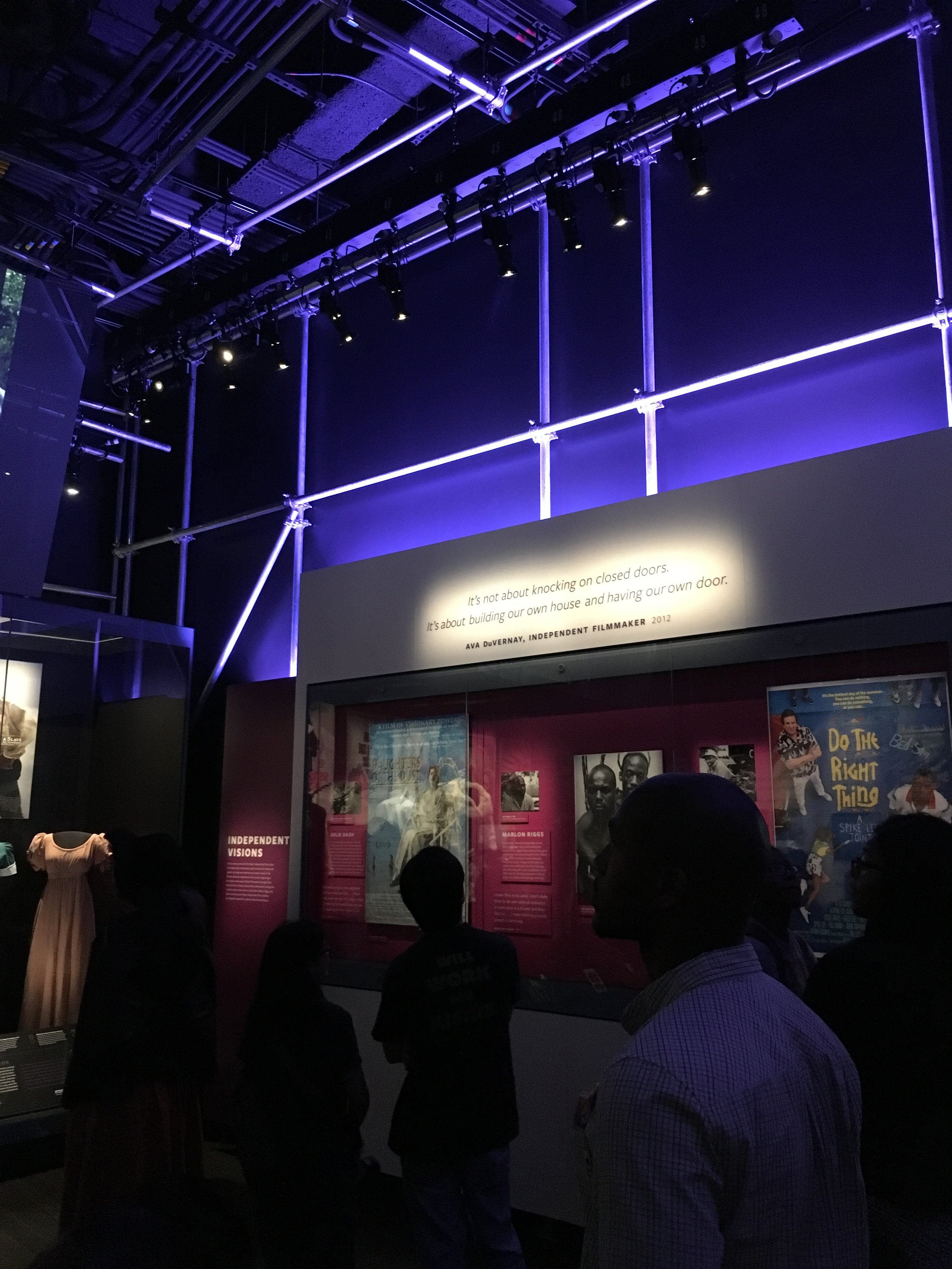NMAAHC sits on five acres on the National Mall, close to the Washington Monument. Photo credit: Ron Blunt
National Museum of African American History and Culture /
The National Mall, Washington, D.C.
Art director for exhibitions and Manager of 2D team.
Completed at Ralph Appelbaum Associates.
Awards:
SEGD Global Design Award: Merit Award 2017
Graphis Design Annual: Silver Award
Spaces, Places, & Cities category in Fast Company’s 2017 Innovation by Design Awards
Finalist, Industrial Design Society of America, 2016 IDEA Awards
Gold, Best Scenography for a Permanent Collection, 2017 International Design & Communication Awards
GOOD DESIGNTM Award, Chicago Atheneum, 2017 Good Design Awards
Press:
The Best Art of 2016 (NY Times)
Visiting the African-American Museum: Waiting, Reading, Thinking, Connecting, Feeling (NY Times)
Review: The Smithsonian African American Museum is Here At Last. It Uplifts and Upsets (NY Times)
I, Too, Sing America (NY Times)
African American Museum opening: 'This place is more than a building. It is a dream come true.' (Washington Post)
Intimate Photos Show the Power of the African American Museum (National Geographic)
Building design © Adjaye Associates.
The Smithsonian National Museum of African American History and Culture is the only national museum devoted exclusively to the documentation of African American life, history, and culture. It helps all Americans see how their stories, their histories and their cultures are shaped and informed by global influences. It explores what it means to be an American and share how American values like resiliency, optimism and spirituality are reflected in African American history and culture. In 2010, NMAAHC hired RAA to design its inaugural exhibitions (85,000 sq ft) while the museum was building its collections, its staff and designing its architecture. RAA's guiding principles were to: set the bar high, provide a full truth that is hard and unvarnished; not provide simple answers and allow for ambiguity; embrace ambiguity, nuance and subtlety; focus on the experiences of people to give meaning to events; embed humor and encourage laughter, even – or especially – where content is difficult; lastly, to remember our humanity. Opening and dedication by President Barack Obama, September 24, 2016.
400 YEARS OF HISTORY. Overlooking the Slavery and Freedom gallery and the Wall of Freedom wall from the Era of Segregation gallery. Projected images, film footage, moments and quotes expressing the struggle for, and changing meaning of freedom over time is seen on the monumental, 60’-foot high wall against large quotes. Photo credit: Ron Blunt
Concourse Level History Galleries
Slavery & Freedom, The Era of Segregation, 1968 and Beyond
During the concept design phase, RAA proposed excavating 60 feet below grade to create a volume large enough to design a journey through 400 years of America’s history. Three “History” galleries: Slavery and Freedom, the Era of Segregation, and Beyond 1968 are tiered within a single space, facing a monumental wall calling out the Founding of America, within which, the country’s challenges and changing notions of freedom, and the paradox of liberty, plays out. Creating the large space also allowed for the strategic placement of large scale and iconic artifacts to be dramatically mounted, including a segregated railcar, a plane flown by Tuskeegee airmen, a guard tower from Angola State Prison, a slave cabin from Edisto Island, and the casket in which Emmett Till was buried. Two trenches were dug to tell the story of the Revolutionary War and later, the Civil War. And in the deepest pit and lowest point of the museum, we located the relics from the 1794 Portuguese slave ship, São José. “Landing” Theaters, Reflection spaces, and Story Booths are located along zig-zagging ramps that rise through the space toward Langston Hughes’ words “I, Too, Am America.”
JOURNEY TOWARDS FREEDOM. Overlooking the History galleries from the orientation area. Photo credit: Chip Somodevilla via Getty Images
GLOBAL COMMUNITY. Photo credit: Ron Blunt
THE MIDDLE PASSAGE INTRODUCTION. The metal clad wall at the entrance is covered in over 400 slave ship names from the Middle Passage. Photo credits: (L) Aki Carpenter, (R) Ron Blunt.
THE MIDDLE PASSAGE. Two iron ballasts recovered from the Sao José, a Portuguese slave ship, which sank off the coast of South Africa in 1794, killing 212 of the more than 400 slaves on board. The ballasts were used to counterbalance the weight of the ship's human cargo. Adult Middle Passage shackles, child Middle Passage shackles and a Lobi Amulet in the shape of shackles. The Lobi tribe designed amulets as a source of power and protection. This amulet in the shape of shackles was used by its owner for protection and to prevent capture and enslavement. Photo credit: Ron Blunt
(LEFT TO RIGHT) Artifacts of the sugar economy and trade: Iron sugar pot and ornate silver objects embedded in sugar. Transatlantic Slave Trade artifacts: Cat o' Nine Tails and the Ife Head of the Yoruba. Domestic Slave Trade artifact: Ashley's Sack - An enslaved woman, Rose, gave it to her daughter before the girl was sold away telling her that it was filled with love.Auction block from Hagerstown, MD. It was sitting on a street corder on a small patch of grass in front of a gas station. Photo credit: 1-2 Aki Carpenter, 3-4 Ron Blunt.
THE PARADOX OF LIBERTY. Emerging into the high space of the Slavery and Freedom gallery, visitors are confronted the Paradox of Liberty installation, set again the Founding of America monumental wall. A statue of Thomas Jefferson stands in front of a stack of bricks marked with the names of people he owned. Photo credit: Ron Blunt.
KING COTTON. Bales have been stacked to represent the country’s enormous economic reliance on slavery during the early years of its expansion. Photo credit: Ron Blunt.
National Geographic photographer Ruddy Roye captured emotional and meaningful moments on opening day. Photo credit: Ruddy Role, National Geographic
LIFE AND WORK. Photo credit: Ron Blunt.
REFLECTIONS OF A GENERATION. Each History gallery has a space for reflection at the end of the gallery before rising up the ramps. The reflection spaces surround the visitors with images and quotes from luminaries of the era. Photo credit: Ron Blunt
JOURNEY TO FREEDOM. Ramps zigzag and rise through the History galleries. Photo credit: Ron Blunt
VIEW OF THE TUSKEGEE AIRPLANE, LANDING THEATERS, AND RAMPS FROM THE ERA OF SEGREGATION GALLERY. Photo credit: Ron Blunt
THE ERA OF SEGREGATION INTRODUCTION. A statue of Clara Brown sits in front of Jones-Hall-Simms House. This structure was one of the first homes in Jonesville, Maryland, a black community established during the Reconstruction era. In the distance stands the Point of Pines Plantation slave cabin from Edisto Island, SC. Photo credit: Luka Kito
RECONSTRUCTION INTRODUCTION AND STATUE OF ROBERT SMALLS. Robert Smalls was an enslaved African American who, during and after the American Civil War, gained freedom and became a ship's pilot, sea captain, and politician. Photo credit: Luka Kito
STEREOTYPICAL MATERIAL. These stereotypical images illustrate the breadth and variety of offensive characterizations of African Americans. Photo credit: Aki Carpenter
THE MODERN CIVIL RIGHTS MOVEMENT. This exhibit area maps the Civil Rights movement up until 1968 and displays a collection of "treasure" artifacts of the era, including: Rosa Parks dress (ABOVE), a lunch counter stool from the sit-in in Greensboro, NC; a watch given to Bayard Rustin from Martin Luther King, Jr; and ten shards of stained glass and one shotgun shell from the 16th Street Baptist Church bombing in Birmingham, AL. Photo credit: Aki Carpenter
(LEFT) The Modern Civil Rights Movement exhibit area also features key legislation of the era, including: Brown v. Board of Education, The Civil Rights Act of 1964, The Voting Rights Act of 1965, and Loving v. Virginia. (RIGHT) The Martin Luther King, Jr. case features a Congressional Gold Medal awarded to Loretta Scott King and Martin Luther King, Jr. in 2014. Photo credit: Aki Carpenter
SEGREGATED RAIL CAR. Coach 1200 was owned and operated by the Southern Railway. It ran long-distance coach between Washington, D.C. and New Orleans. Photo credit: Luka Kito
(LEFT) NAT TURNER'S BIBLE. Turner led a slave rebellion in 1831 in Southampton County, Virginia. The rebellion halted abolitionists' ambitions and spurred harsher laws against slaves and blacks. Photo credit: Luka Kito (MIDDLE) Ku Klux Klan hood. Photo credit: Lexey Swall / NY Times. (RIGHT) ANGOLA PRISON TOWER. Louisiana State Penitentiary, called Angola, occupies a former plantation. The prison is now among the largest in the country, and most of the inmates are African-Americans serving life sentences. Photo credit: Lexey Swall / NY Times.
INTERACTIVE LUNCH COUNTER. An interactive lunch counter engages visitors by highlighting the importance of individual actions taken in the Civil Rights movement. Photo credit: Chip Somodevilla via Getty Images
TUSKEGEE AIRPLANE. Overhead is the PT-13D Stearman Kaydet training aircraft used by the Tuskegee Airmen. Photo credit: Luka Kito
LANDING THEATER INTRODUCTIONS. A set of three major films in the History galleries are presented as large-scale, sit-down, narrative programs. Moving through major eras in history, they look back at the constant and ongoing struggle for freedom and equality over time. Photo credit: Megan Kerman
BEYOND 1968 INTRODUCTION AND MEDIA PICKETS. Photo credit: Luka Kito
BEYOND 1968 MEDIA PICKETS. A centralized media “pendant” and audio program, coordinated with individual “picket” media, captures the spirit and energy of the pivotal events of 1968 using a compilation of archival footage. Photo credit: André Chung for Curbed
(LEFT) REFLECTIONS BOOTH. An interactive booth allows people to share and record their reflections through video and audio as a way of remembering and commemorating our history. (RIGHT) RAA conceptualized and wrote treatments for over 200 media programs and experiences including large-scale interactive and archival media. Our goal was to engage visitors at multiple levels, and to provide a way for people to connect deeply and meaningfully to the Museum and its stories. Photo credit: Megan Kerman
I, TOO, AM AMERICA. As you exit out of the History galleries, you pass by a Langston Hughes poem excerpt in giant brass letters. Photo credit: Aki Carpenter
Third Floor Community Galleries
Making a Way Out of No Way, Power of Place, Sports, Military
“Making a way out of no way” is a phrase rooted in and understood by the African American community, which expresses the creativity, resilience and optimism found in a community that for generations was given and told “no way.” This theme became the lens and pathway through the Community galleries, where we understand the struggles and accomplishments of everyday, extraordinary people. In the Military gallery, the “Double V campaign” - fighting for victory abroad and at home against segregation and discrimination, became the physical “V” form around which stories are told about African Americans fighting in America’s war since the Revolution. And where the gallery opens toward a view of the Washington Monument, those who won the Medal of Honor are recognized. In the Sports gallery, visitors enter under a large-scale media program in which we see the some of the greatest moments and legends in sports history, and learn about America’s “gamechangers”- those who not only changed their sport, but history itself.
MAKING A WAY OUT OF NO WAY INTRODUCTION. A large-scale linear narrative, coordinated over five screens and driven by a rich narrative audio program, introduces visitor to the concept of “Making a Way out of No Way, featuring people and strategies used, over time by African Americans to survive and thrive. Photo credit: Luka Kito
MAKING A WAY OUT OF NO WAY. This gallery explores themes of agency, creativity, and resilience through personal stories of African Americans who challenged racial oppression and discrimination and created ways out of "no way." Photo credit: Luka Kito
Details of the Making a Way Out of No Way exhibition. Photo credit: Megan Kerman
(LEFT) A super graphic of Mary McLeod Bethune's voice bookends the Activism section of the Making a Way Out of No Way gallery. (RIGHT) A cluster of historic photographs help to introduce the Lyles Farm story in the Power of Place gallery. Photo credit: Aki Carpenter
POWER OF PLACE. A large-scale case in the Lowcountry: Rice Fields area of the Power of Place gallery. Power of Place showcases ten "place study." Each provides intimate views into distinct moments of the African American experience. Photo credit: Luka Kito
DOUBLE VICTORY. The Military gallery establishes an understanding that the African American military experience shapes opportunities for the greater community and has profoundly shaped the nation. Photo credit: Luka Kito
DOUBLE V. Upon entering the gallery visitors are immediately drawn to the “Double V” apex. Visitors will see the 1942 “Double V” emblem and an excerpt from the 1948 Executive Order (EO) 9981. Each side of the “Double V” apex has five large images and large-print quotations. Photo credit: Aki Carpenter
A SWEEP OF MILITARY HISTORY. Double Victory broadly organizes African American military experiences into three main clusters: Struggle for Freedom, A Segregated Military and Stirrings of Change to a Colorblind Military. Photo credit: Chip Somodevilla via Getty Images
A VIEW OF THE WASHINGTON MONUMENT. Through a "lens" in the architectural facade, visitors can see the Washington Monument on the Mall, and Arlington National Cemetery. Photo credit: Susan Walsh / Associated Press
The Sports: Leveling the Playing Field gallery explores the contributions of athletes, both on and off the field. Photo credit: Aki Carpenter
THE BLACK POWER SALUTE. Tommie Smith and John Carlos raised black-gloved fists when the United States national anthem was played during their medal ceremony at the 1968 Olympics in Mexico City. Photo credit: Jim Lo Scalzo / European Press Photo Agency
GAME CHANGERS. Game changers are the people, events, and institutions that have forced the sports world and larger society to alter its practices, belief systems, or racial politics. Photo credit: Luka Kito
(ABOVE) Details of the Sports gallery. Photo credit: Matt Krupanski
BASEBALL THEATER. The chairs in this theater and recreated from a Negro League stadium – Negro Leagues were among the most important businesses in black America during the first half of the 20th century. Photo credit: Chip Somodevilla / Getty Images
Fourth Floor Community Galleries
Cultural Expressions, Musical Crossroads, Taking the Stage, Visual Art
On the fourth floor of the Museum, are “Culture” galleries: Cultural Expressions, Taking the Stage, Musical Crossroads and Visual Arts. A central, overhead media program celebrates African American cultural expressions on a large-scale, overhead screen that rings a space where people may sit and gather. A great diversity of stories and artifacts surround the seating in a quilted pattern of casework that allows visitors to pass through to the other galleries. In Taking the Stage, visitors enter a “back-stage” experience where the history of African Americans in theater, film, television and stand-up reveals the often difficult experiences of those working in the industry and how popular American culture evolved with African Americans in the picture. In Musical Crossroads, visitors can trace roots and connections between musical genres from Negro Spirituals and Work Songs to Funk, Blues, Jazz and Hip-Hop. A dance floor positioned between Chuck Berry’s Cadillac and the P-Funk Mothership gives visitors a chance to shake their booty, while others may visit the Record Store or Recording Studio. In the Visual Arts gallery, work from a range of artists including Jacob Lawrence, Charles White and Kara Walker illustrates the critical role that African Americans played in shaping the history of American art.
CULTURAL EXPRESSIONS is a circular, experiential, introductory space to African American and African diaspora culture. Photo credit: Aki Carpenter
CULTURAL COMMONS OVERHEAD RING. A large-scale dramatic media presentation introduces Cultural Expressions and all galleries on the Culture floor, focusing on culture ”writ large” and as a form of survival and expression. Photo credit: The Washington Post via Getty Images
Main themes in the Cultural Expressions gallery include adaptation, improvisation, agency, identity, imagination and representation. Photo credit: Aki Carpenter
MUSICAL CROSSROADS tells the story of African American music from the arrival of the first Africans to the present day. Photo credit: Aki Carpenter
CHUCK BERRY'S CADILLAC. This Cadillac was driven on stage at the Fox Theater in St. Louis, the same theater that turned him away as a child because he was black. Photo credit: Chip Somodevilla via Getty Images
MUSICAL EXPRESSION. In exploring how the intermingling of musical and cultural traditions, styles and beliefs, brought forth new modes of American musical expression, the exhibition expands the definition of African American music to include African American music-makers in all genres and styles. Photo credit: Aki Carpenter
MARIAN ANDERSON gave voice to the principles of freedom, justice, and equality. Photo credit: Matt Krupanski
Detail of the Musical Crossroads gallery. Photo credit: Chip Somodevilla / Getty Images
TAKING THE STAGE explores the history of African Americans in theater, film, and television to celebrate their creative achievements, demonstrate their cultural impact, and illuminate their struggles for artistic freedom and equal representation. Photo credit: Aki Carpenter
VISUAL ART is a gallery dedicated to illustrating the critical role American artists of African descent played in shaping the history of American art. Photo credit: Studio Museum Harlem (Twitter)
Galleries within the exhibition group artists by theme or approach, illustrating shared intellectual and aesthetic sensibilities. Photo credit: Luka Kito
Art direction for the graphics in the Home Sweet Café. Photo credit: National Museum of African American History and Culture
Photo credit: Luka Kito
Photo credit: Jahi Chikwendiu/The Washington Post





